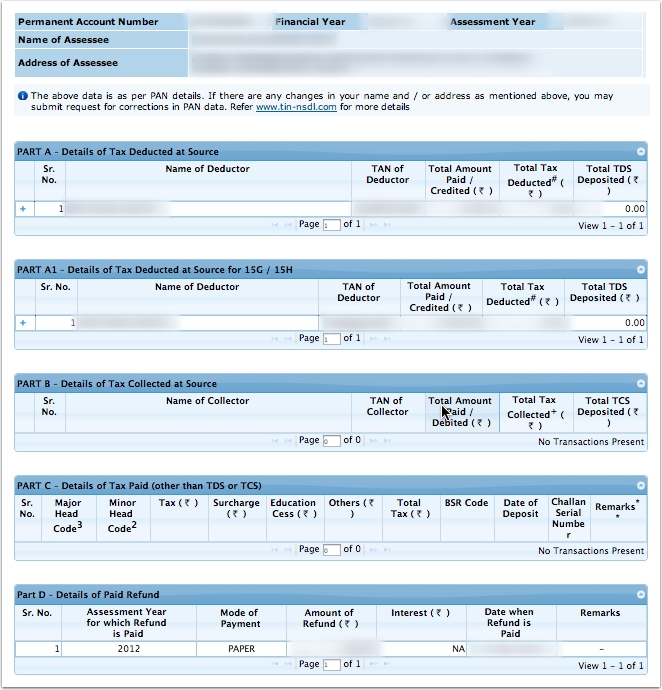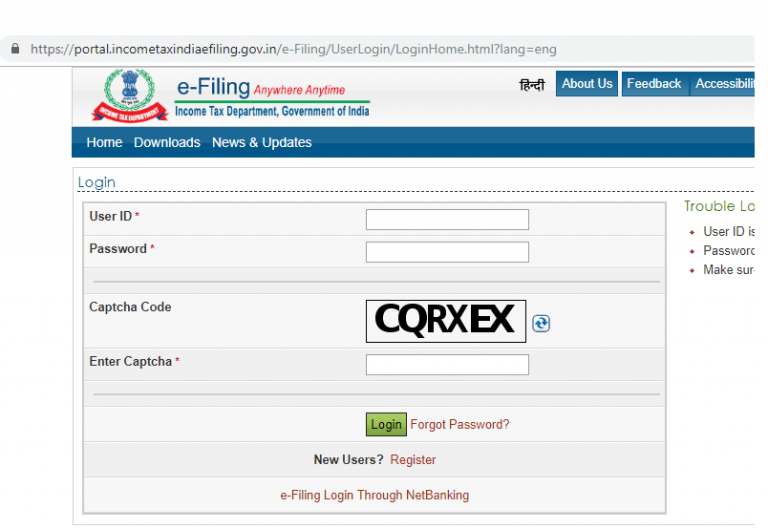

h) Part F: Details of Tax Deducted on the sale of immovable property under Section 194(IA) All high-value transactions are to be reported under Annual Information Return in Part E of Form 26AS. The details of AIR transactions may include purchases of high-value mutual funds, purchase of property, and purchases of high-value corporate bonds.

Part B of the Form 26AS includes details of tax collected at source (TCS) from a taxpayer after they have purchased specific goods from a seller. d) Part B: Details of TDS (Tax Collected at Source) In case, you have sold any property during the last financial year, and TDS was deducted, this information will reflect under this section. Part A2 of the Form 26AS comprises details of the TDS deducted on immovable properties that you (taxpayer) may have sold during the previous year. c) Part A2: Details of TDS (Tax Deducted at Source) on the sale of any Immovable Property under Section 194(IA)

In case, you have not submitted Form 15G or Form 15H, Part A1 of the Form 26AS will display 'No transactions present'. Part A1 contains details of income on which there is no TDS deduction because the taxpayer has submitted either Form 15G or 15H. Read More: How to Check Components of a Salary Slip? b) Part A1: Details of TDS (Tax Deducted at Source) for Form 15G or Form 15H (as applicable) Name and TAN (Tax Deduction and Collection Account Number) of the Deductor.It also contains information about the TDS collected and deposited along with the following details: Part A of the Form 26AS provides the quarterly information about the TDS (Tax Deducted at Source) deducted on the salary drawn, pension income and income earned on interest.

If you are wondering about what is Form 26AS, it contains the following sub-parts: a) Part A: Details of TDS (Tax Deducted at Source) What are the Different Parts of Form 26AS?


 0 kommentar(er)
0 kommentar(er)
